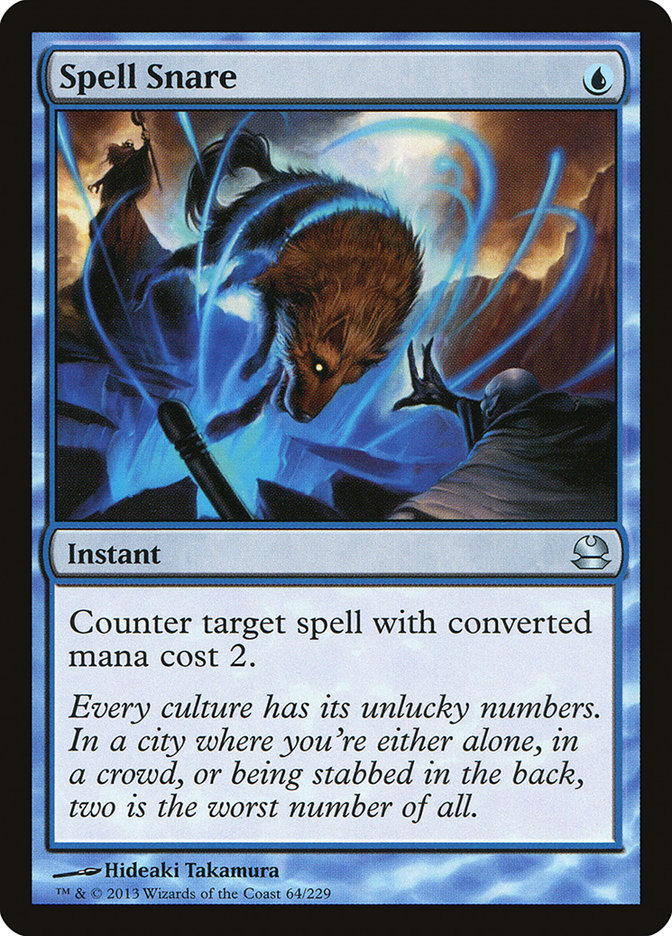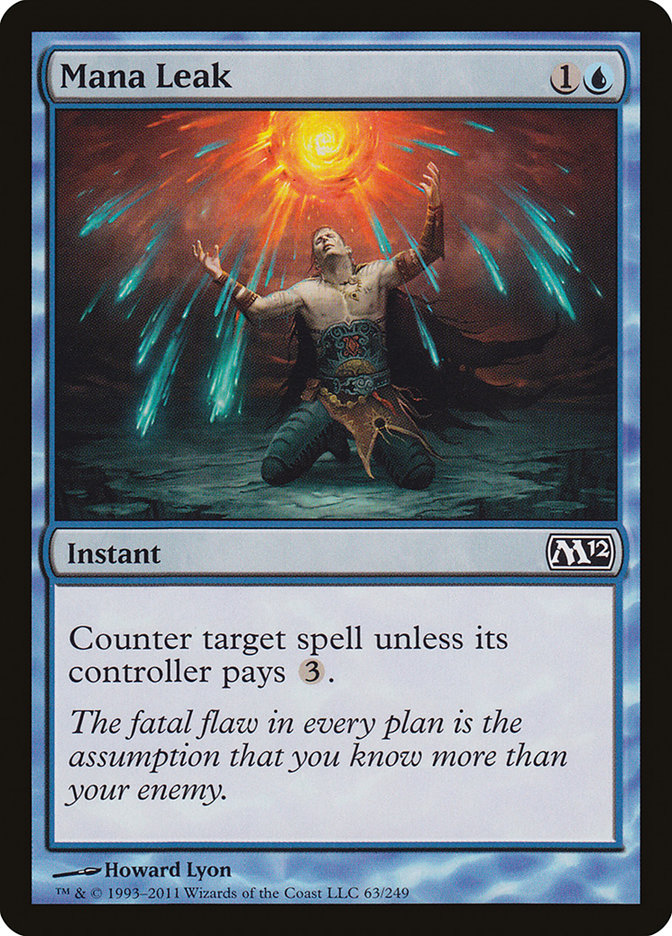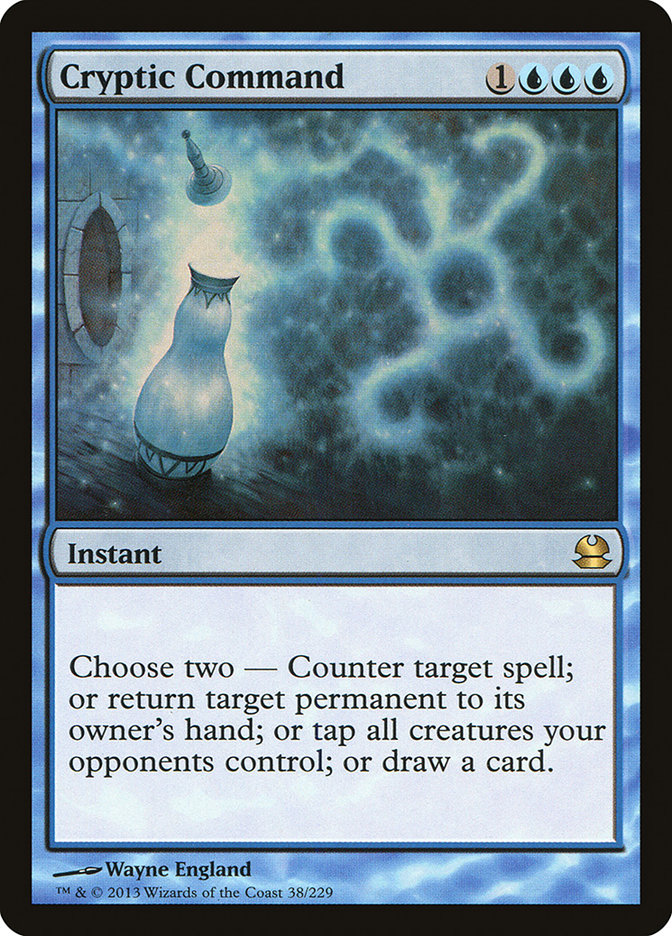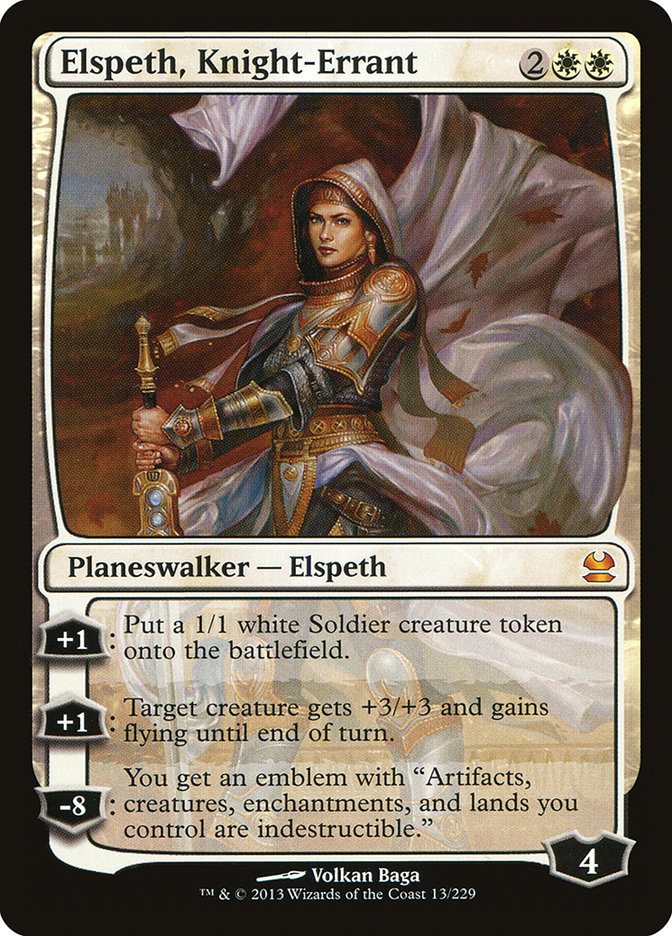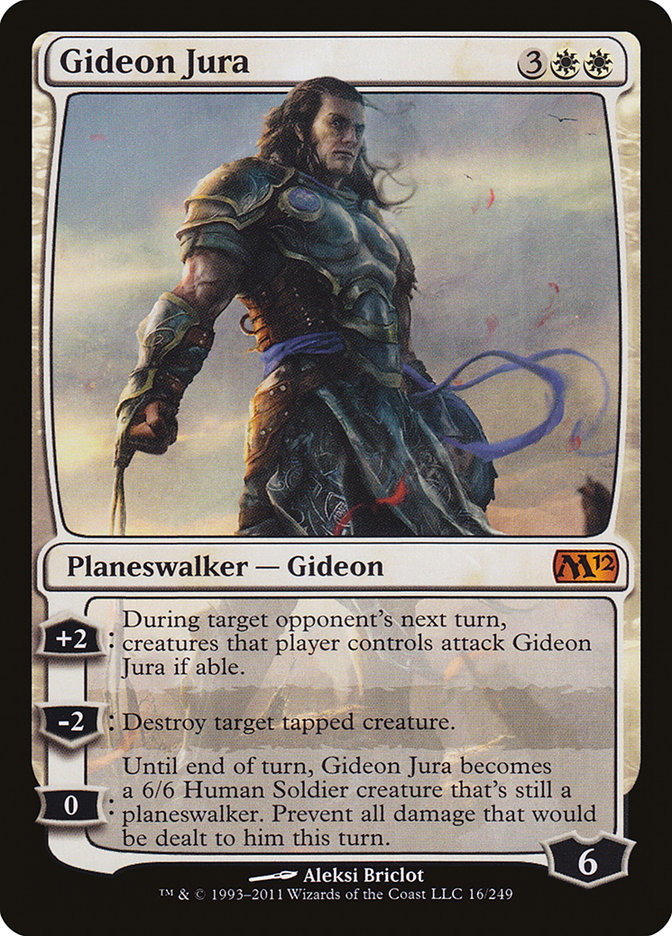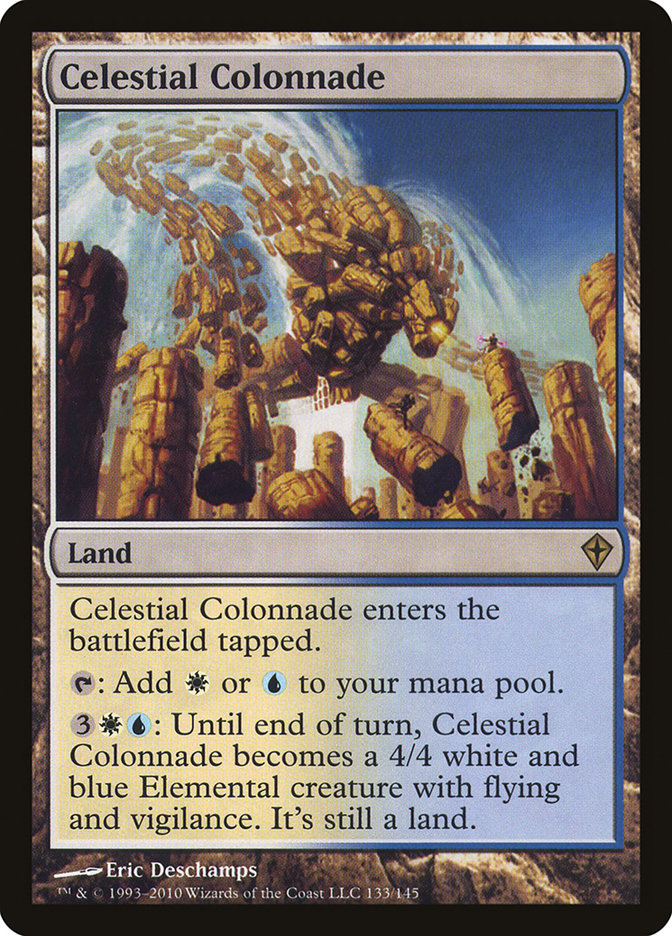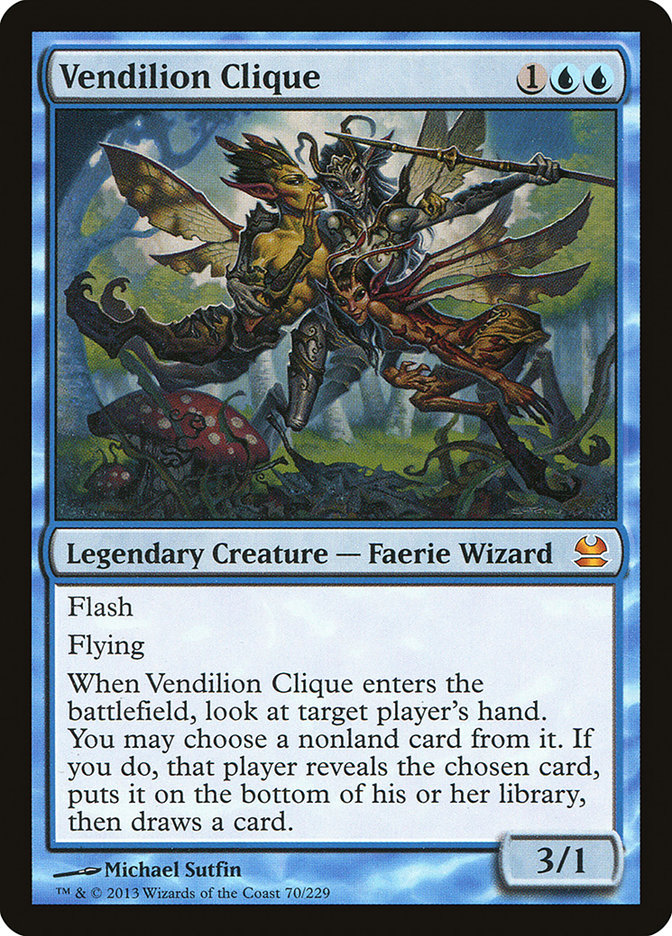Grand Prix Richmond is right around the corner, and it’s time to start preparing. It’s no secret that I’m not a huge fan of the format. I’m one of those old men who remember Extended and the glorious nature of that format. The bannings were on point, there was an additional Pro Tour that resulted in an Extended PTQ season every year, and the support system around the popular format was extensive. I was such a huge fan that two of my four PTQ wins came in Extended, where I battled with Counterspell, Decree of Justice, Temple of the False God, and Exalted Angel. There were many other sweet cards in that old U/W Control deck, but I don’t want to spend too much of this article reminiscing.
I bring up this old U/W Control deck from ancient days because the Modern deck being presented reminds me of that control juggernaut. Esper was the initial plan, but with the banning of Deathrite Shaman and the entrance of Wild Nacatl and Bitterblossom into Modern, it’s time we shift to a more consistent two-color strategy.
The last time I chatted to you all about Modern I presented Hulk Smash. With Deathrite Shaman banned, the Protean Hulk combo deck actually gains some power. The biggest issue is the resurgence of Faeries because not only does it have hand disruption but it also has a heavy dose of countermagic to boot. The Fae menace (I can’t believe I have to talk about that deck again) and maindeck copies of Relic of Progenitus from G/R Tron are the two issues that Hulk Smash will have to be able to contend with.
I guarantee an avalanche of game 1 victories with this deck or any other graveyard-based deck in the current metagame. Deathrite Shaman was such a problem that Lightning Bolt or Pithing Needle had to be added to the maindeck to answer it, but now those cards can be replaced with items that have more impact across the metagame. Even with the power advancement of Hulk Smash, the banning of Deathrite Shaman, and my need to play wacky things, it’s back to control I go.
Creatures (7)
Planeswalkers (6)
Lands (24)
Spells (23)

The Countermagic Is So Good!
I’ve hinted a few times about an Esper Control deck for Modern. A few months back I had a raw untested Esper build and got some pretty good feedback. After some tinkering and testing, I’ve changed that Esper Control deck to straight U/W. The only cards that made it Esper were hand disruption and Creeping Tar Pit, both powerful aspects of a control deck. The beauty is that cutting those cards and moving the control deck to straight U/W doesn’t damage many matchups because of the power of the countermagic in Modern.
Spell Snare, Mana Leak, and Cryptic Command are each fantastic in Modern. Mana Leak is a no brainer and is played in any deck playing blue. The catchall two-mana spell is a card that makes control decks playable. People will never forget the multiple Standard formats it affected in the past, but the most memorable and fresh on the memory use was the Delver of Secrets era. Being able to cast Mana Leak, play a three-mana spell, and then drop a Snapcaster Mage to do it again is one of the most powerful sequences a control deck can do. It was good then, and it will be very good now.
The key strategy when building a control deck for an older format is to start with cards that were powerful in the Standard formats they existed in previously. Mana Leak is a clear example of a powerful card that is always going to be a player in formats where Counterspell isn’t available, so let’s start off with four of it.
Cryptic Command is another huge reason to play a blue deck in Modern. It fits as a hard counter but is so much more than that. At Pro Tour Amsterdam, I played only three Cryptic Commands, and that was one of the biggest mistakes of my competitive career. Cryptic Command pulls you out of the jaws of defeat and at the same time can be the best insurance policy for keeping control of the game. When you start to chain them using either multiple copies or Snapcaster Mage, the game gets out of reach for any opponent very quickly. Casting a Snapcaster Mage and then choosing to counter a spell and return Snapcaster Mage to your hand is a pretty demoralizing play for any opponent.
When sideboarding, the only time I cut a Cryptic Command or two is when playing against a hyperaggressive deck. Even then it rarely happens because there are other cards that are worse that have to go first. The Faerie decks were the big culprits of punishing opponents with Cryptic Command in previous Standard formats. Five-Color Control also used Cryptic, but it didn’t punish opponents like the Flash deck did. This Modern U/W Control deck will pack four copies of Cryptic Command to join Mana Leak and new recruit Spell Snare.
Spell Snare is a necessary evil in Modern. I’ve mentioned Faeries a few times today, but I don’t think the deck is very good in the format. Even if the deck isn’t good, people will play it, so we have to be prepared. The Fae have stomped control decks since the beginning of time, and if a U/W Control player enters the arena ill prepared, it will be lights out. Cards like Bitterblossom, Spellstutter Sprite, and Mana Leak are all targets that Spell Snare can dispatch easily. When playing Esper, players have the ability to Thoughtseize or Inquisition prior to a Bitterblossom resolving. The only options that are available to U/W Control are Spell Snare and Spell Pierce.
I’ve played with both cards, but Spell Snare has more targets across the metagame that are problematic. Spell Snare hits Sylvan Scrying, Dark Confidant, Tarmogoyf, Cranial Plating, Arcbound Ravager . . . the list goes on and on. Spell Pierce can easily be a dead card, and the U/W Control list I presented has enough "soft" counters already (the four Mana Leaks are enough in that department to draw throughout the game). When you run too many soft counters, there’s a chance you get overloaded on them and have too many dead draws later on. The Spell Snare secret is out, so prepare to see a lot of it at Grand Prix Richmond.
How Do We Win?
Powerful countermagic is the key to U/W Control’s success, but the win conditions aren’t too shabby either. I’ve talked extensively about my love of the planeswalkers in this deck throughout my writing career. Jace Beleren; Elspeth, Knight-Errant; and Gideon Jura are some of the finest planeswalkers ever printed. Even though Jace Beleren isn’t a win condition, it provides a constant supply of card advantage like no other. Baby Jace is one of those cards that isn’t super attractive on its face but will quickly throw a wrench in any opponent’s game plan if they don’t dispatch it quickly. This version of U/W Control is very "tap out" later in the game but provides an avalanche of countermagic and removal early on. After the dust settles, any of the three planeswalkers will resolve and quickly take over the game.
Anyone who played Magic during the Standard era of Elspeth, Knight-Errant knows the power of the card. Control enthusiasts like me along with most aggro players such as Brian Kibler both agree on its power. With her loyalty going to five, there is almost no way to kill Elspeth via damage, and she must be dealt with by a permanent-removing spell. She locks up the ground quickly and provides a flow of aggression to put pressure on an opponent, and her ultimate is almost certain victory later in the game.
Gideon Jura serves a very similar role. The removal packed into the five-mana planeswalker is the most valuable to the overall strategy of this deck. Being able to drop him on turn 5, kill an opposing monster, and then have enough loyalty to take a whack or two are some of the major reasons why Gideon Jura makes the elite U/W team. The other modes on him are also very effective, and I’d argue that the win condition aspect of the card is the weakest when you scale each ability. Gideon Jura is clearly a card created to make aggro players writhe in pain, but the planeswalker does give control players a little bit of a headache as well.
The other win conditions in the deck are Celestial Colonnade and Vendilion Clique. You have the ability to win with Snapcaster Mage as well, but I write him off as fodder for rebuying spells and blocking most of the time. Celestial Colonnade and other man lands are staples of the Modern world. The best part about running U/W man lands is you don’t typically use them until the end of the game and not until after you’ve exhausted your opponents answers in hand.
Vendilion Clique is another win condition but is also as fragile as Snapcaster Mage. More often than not you’ll use Snapcaster Mage and Vendilion Clique as early damage producers here and there but finish them off with a planeswalker or Celestial Colonnade. The deck works pretty well and wins with some ease even though the win conditions have a fragile appearance. Many of you have played control decks that have even less ammunition than this, so I’m not worried.
Mana Matters
The mana base is one of the key reasons why U/W Control is a better choice than Esper Control at this juncture. Switching to U/W allows us to play four Tectonic Edges and still have perfect mana. That is a hard feat when playing a three-color deck, and the power of Tectonic Edge is tremendous. The worst matchup for this deck game 1 is G/R Tron, but a Strip Mine effect gives us a fighting chance. The other benefit for the mana base is the inclusion of four Celestial Colonnades. The fact that is flies and has four toughness makes it good versus both aggro and control decks. There are fewer fetch and shock lands in U/W Control as well, so you’ll take less damage from your mana base than you would if you were playing Esper.
The last perk and probably the rarest occurring one is the inclusion of more basics lands against Blood Moon effects. I’ve been losing to Blood Moon since its inception, but luckily this U/W Control deck has more basics than the Esper version.
You may have noticed that they are only 24 lands in the list. This control deck is a well-oiled machine that uses cantrips in the early game to hit land drops and packs spells that cost under five to play. The only five-mana spell is Gideon Jura, and he isn’t needed for quite some time. After playing many games, I can tell you that the land count isn’t as painful as it looks. The amount of mana flooding that happens when the land count is increased isn’t worth it, and this isn’t a Sphinx’s Revelation deck that can take advantage of more lands. I mentioned the tap out nature of this deck, and there are always pros and cons to it. Most of the field isn’t running a ton of ways to punish our sorcery speed strategy, so I feel like it’s a good time to take advantage of that.
Miscellaneous Perks
Who the heck runs Supreme Verdict in Modern? Oh wait, we do! Supreme Verdict is a card that doesn’t really exist in Modern, which automatically gives us an advantage when we incorporate it. The sweeper that can’t be countered is very useful against any Delver of Secrets, Zoo, or creature-based deck that depends on its dorks for victory. This list has three copies of Supreme Verdict and joined with Snapcaster Mage provides an endless supply of sweepers throughout the game. I have linked Supreme Verdict to Detention Sphere and Path to Exile, which is the entirety of the removal package ignoring Gideon Jura. This has been pretty efficient in dispatching aggro decks in my experience, and it’s combined with a spicy two-of in Wall of Omens.
My use of Wall of Omens without Restoration Angel has received some heat from my buddies, but they just haven’t played with the card against aggro decks in times past. Against decks where it’s terrible, you just cycle it, but when it’s good, it stops a Wild Nacatl—everybody is happy! Wall of Omens is also a very easy card to board out when bringing in hate for whatever non-aggro deck you’re playing against. I won’t be too offended if you decide to drop them for something else, but remember that anyone with a Lightning Bolt and a Quasali Pridemage could knock you out of day 2 just as easy.
The Other Fifteen
The sideboard is my walk down memory lane of a Standard format that has come and gone. There hasn’t been a card like Luminarch Ascension for quite some time. The two-mana enchantment is almost an auto win when it’s not dealt with immediately. Untapping with it and being able to protect it provides you a win against any control mirror as well as against combo decks that enjoy the draw-go strategy. The clock that U/W Control puts on them normally isn’t enough to pressure them into going for the win, but with Luminarch Ascension they can’t wait as long. There are a few other matchups I’d bring it in against, but mainly those decks don’t apply pressure until later in the game.
Meddling Mage, Baneslayer Angel, the graveyard hate, and Aven Mindcensor are pretty obvious in their uses. The singleton Last Breath is the only oddball that you may see. It’s a powerful removal spell that dispatches Dark Confidant, Scion of Oona, the creatures of Splinter Twin, and a list of powerful creatures from both the combo and aggro side. Its main purpose is to be Path to Exile number five, so bring it in for matchups with that in mind.
I’ll be testing this deck and perfecting it to the best of my ability before Grand Prix Richmond, but don’t hesitate to send me any suggestions you have about the maindeck or sideboard. I have never been close minded to suggestions on how to improve my decks, and many times I have made errors in card choices where there’s something that’s strictly better. I remember in an article I did a little ways back a reader corrected me on my use of Death Cultist and suggested I play Mogg Fanatic instead (in the deck I was working on, Mogg Fanatic had the ability to "sweep" an opponent’s board with a Leyline of Sanctity out, whereas Death Cultist didn’t have that extra option). That is just one example of the slight oversights I make from time to time, so your suggestions are always welcome.
I look forward to perfecting this Modern control deck with all of you as we prepare for an epic GP in the very near future.

